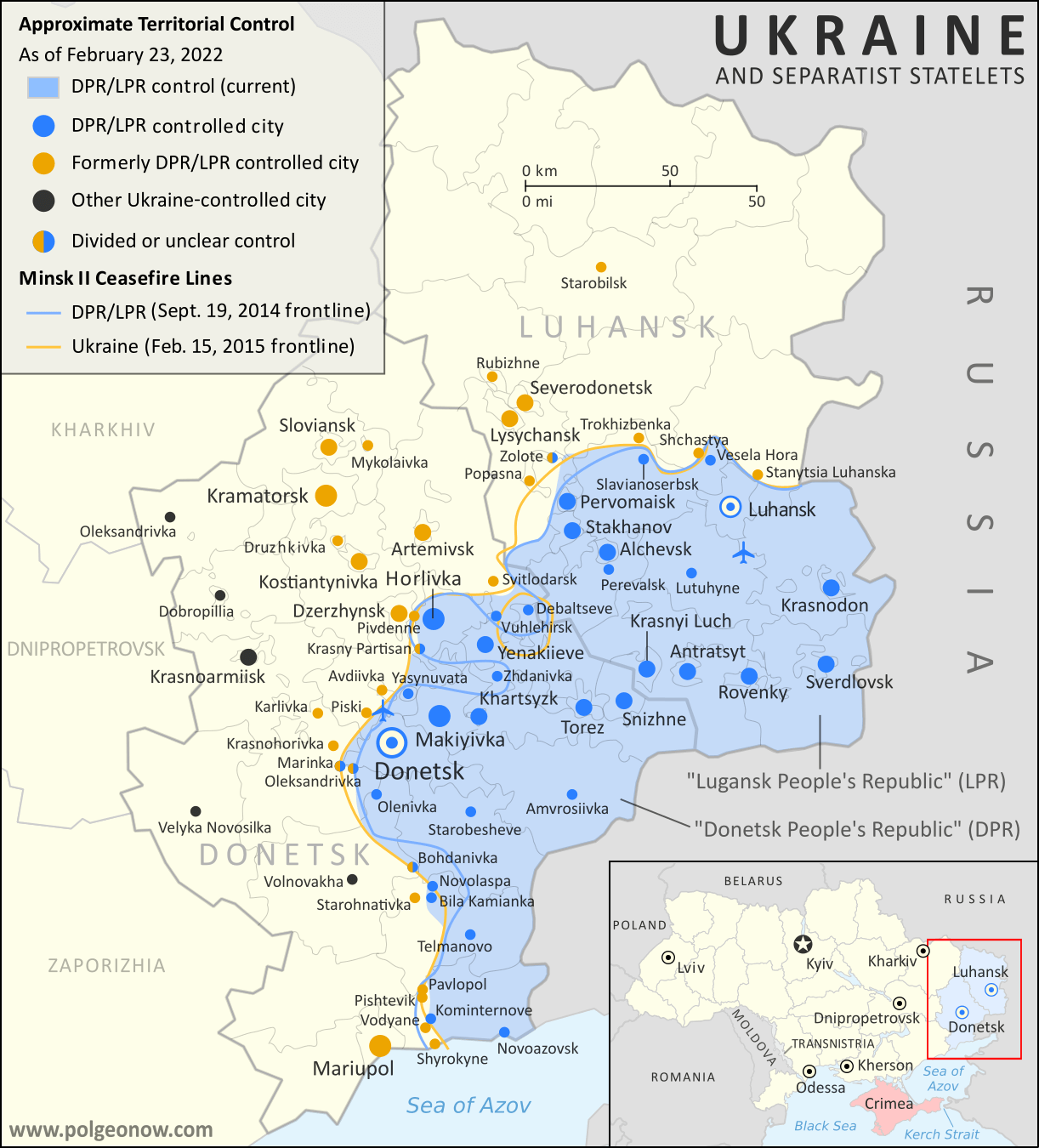 |
Map by Evan Centanni and Djordje Djukic. Contact us for permission to use this map.
|
(View this article in the member area)
Timeline by Djordje Djukic
 |
Map by Evan Centanni and Djordje Djukic. Contact us for permission to use this map.
|
 |
Map by Evan Centanni and Djordje Djukic, from base map by Koen Adams of onestopmap.com.
Contact us for permission to use this map. |
(View this article in the member area)
Timeline by Djordje Djukic, with additional reporting by Evan Centanni
Since our previous Yemen control map report of three months ago, forces of
Yemen's unrecognized, Iran-backed Houthi government have rolled back
their rivals' recent gains, but still haven't been able to move on the
central city of Marib. Amid this stalemate, a surprise UN-brokered truce, alongside the resignation of the country's weak internationally-recognized president, has opened up new possibilities for an end to the war.
 In the past week, Russian forces have largely withdrawn from the area of capital city Kyiv
and other parts of Ukraine's north. But Russia has by no means
given up on its invasion, and is now shifting its military focus to
consolidating control of Ukraine's east, alongside its allies in the
self-proclaimed Donetsk and Lugansk People's Republics.
In the past week, Russian forces have largely withdrawn from the area of capital city Kyiv
and other parts of Ukraine's north. But Russia has by no means
given up on its invasion, and is now shifting its military focus to
consolidating control of Ukraine's east, alongside its allies in the
self-proclaimed Donetsk and Lugansk People's Republics.  |
Areas controlled by the self-proclaimed Donetsk and Lugansk People's Republics just before the Russia's full-scale invasion of Ukraine began. For approximate changes that have happened since, check out our Ukraine control map. (Map by Evan Centanni and Djordje Djukic. Contact us for permission to use this map.)
|
Though now overshadowed by the war, an important political geography event took place in the days leading up to Russia's invasion of Ukraine, changing some versions of the world's list of countries.
Back in April 2014, the month after Russia-backed separatists in the peninsula of Crimea declared their independence from Ukraine, Russia-backed rebels in Ukraine's eastern provinces of Donetsk and Luhansk also announced that they were forming independent countries: the Donetsk People's Republic (DPR) and Lugansk People's Republic (LPR). ("Luhansk" is the Ukrainian-language spelling of the place name, while "Lugansk" is the Russian-language version.)
But unlike Crimea, which had already been secured by Russia's military, and was quickly absorbed into Russia with the permission of its supposed independent government, Donetsk and Lugansk would remain unrecognized for the next eight years - not officially treated as independent countries by any other country, even Russia.*
There are newer editions of this article available. To find the most recent, view all "How Many Countries in the World" updates!
This article, originally from 2011, has been revised and updated to March 2022. You can view older versions of the article in our archives. The main update from last year is the promotion of the self-proclaimed Donetsk and Lugansk People's Republics from unrecognized to partially-recognized "de facto states".
 |
| A world political map published by the US government. |